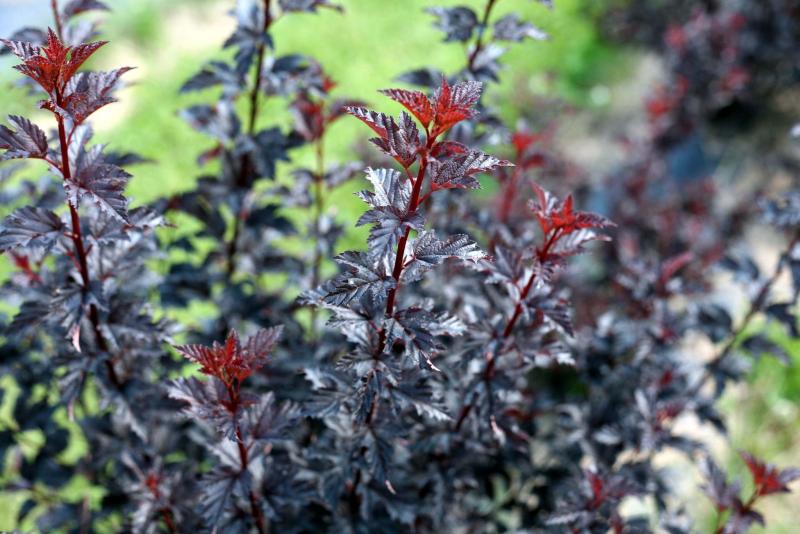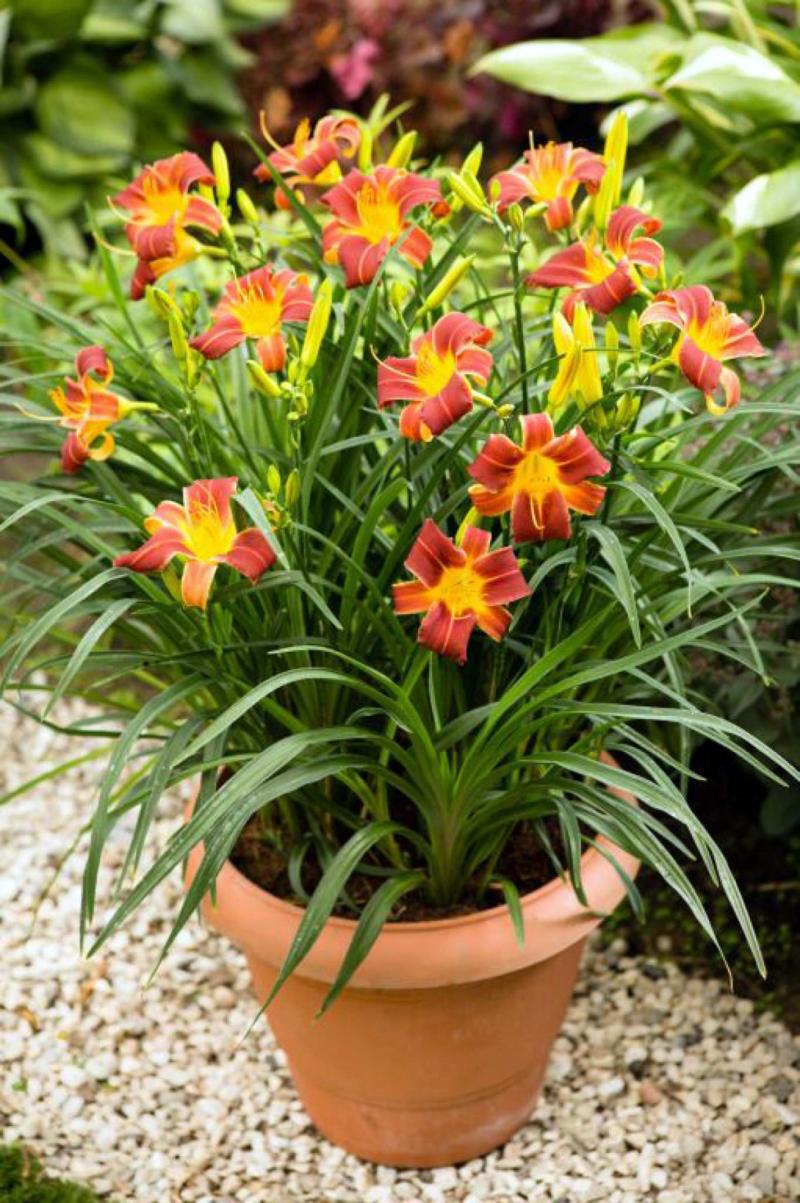
EveryDaylily Red Ribs is a prolific re-blooming daylily suitable for the perennial border or patio pot.
Darwin Perennials
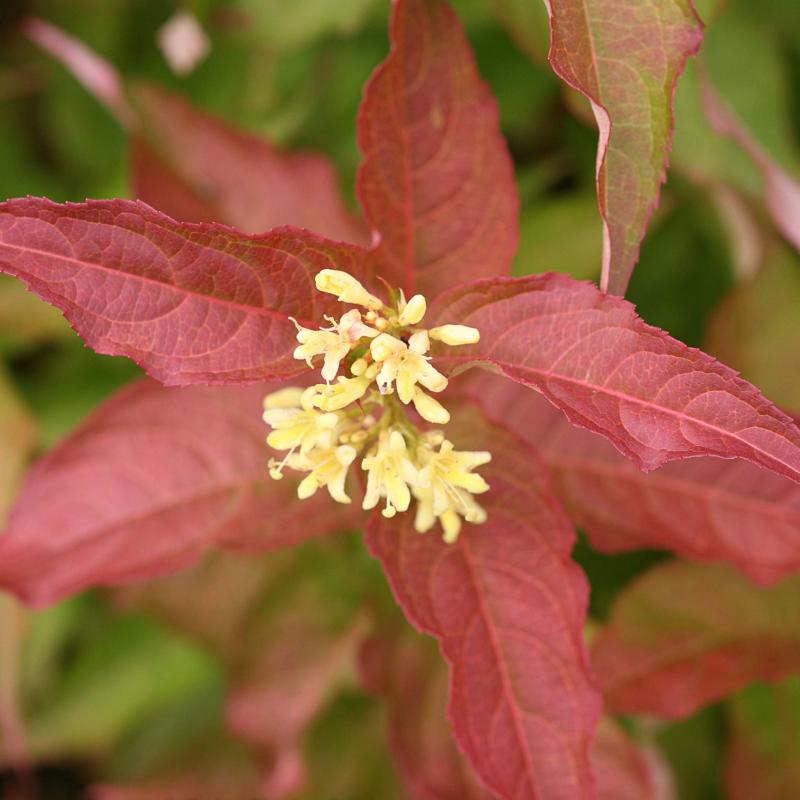
Kodiak Orange Diervilla has a foliage colour not often found in the shrub landscape and can be grown in sun or shade.
Proven Winners
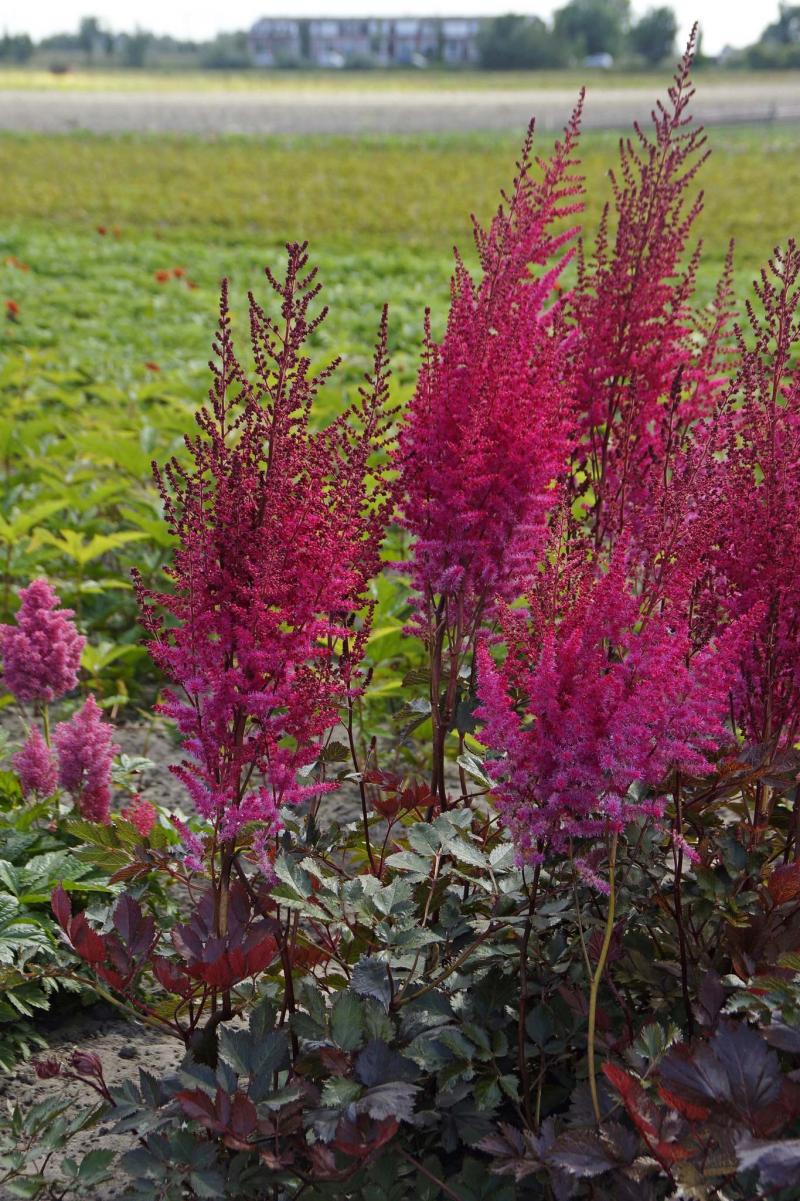
Brighten up your shade garden with the tall velvety plumes of Mighty Chocolate Cherry astilbe.
De Vroomen Bulb Canada Inc.
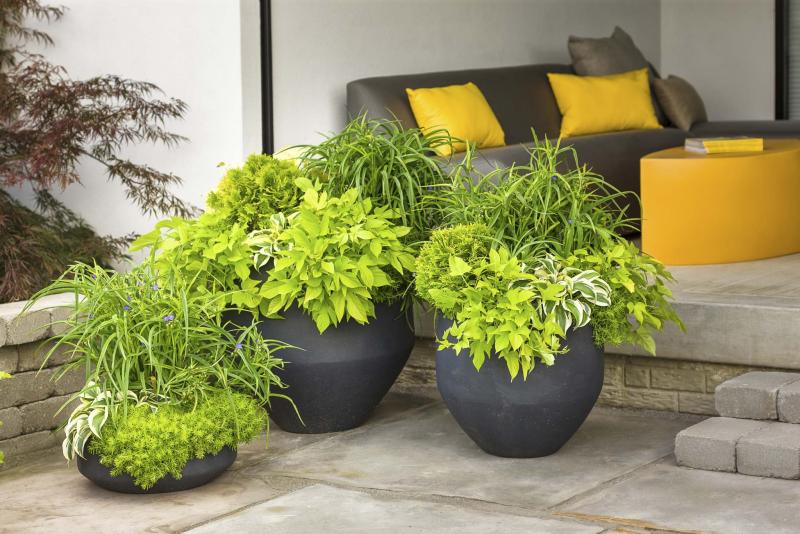
Proven Winners
Anna’s Magic Ball is a globe-shaped chartreuse evergreen that can be grown in patio pots.
Has it crossed your mind — as it has mine — that replacement plants may be needed once this harsh winter finally wraps up? Snow cover is an excellent insulator; however, winter injury resulting in plant losses often occurs at the start of the winter when plants are not fully acclimated at the time of sudden, freezing temperatures.
Interestingly, separate parts of a plant are affected differently by extreme temperatures. Root injury, for example, typically results because of soil heaving when temperatures fluctuate wildly or if plants are in an area, such as a slope, where there is minimal snow cover.
Of course, plants that are hardy to our growing zone and especially native plants are very resilient. Despite the effects of extreme temperature fluctuations, native plants are well adapted to survive the winter and continue to thrive in the garden. Are those the ones we buy exclusively? Not all of us.
It’s often the more tender or rare and unusual plants that are borderline hardy, or those that exhibited some previous signs of weakness or perhaps were not sufficiently protected in time for winter, that don’t always return in spring.
Mice and rabbits cause considerable damage to plants, too, when they strip and feed on the bark of woody plants either above or below the snowline. Previously healthy shrubs can be seriously or fatally affected if there is damage to stem tissues and, in particular, the vascular cambium, which is responsible for the flow of food and water to the plant.
Whatever the reason for a plant’s failure to survive the effects of winter, or if it just so happens that you have some space in your garden to fill, there are colourful new shrubs and perennials to try this year.
Ninebark, also known as Physocarpus opulifolius, is an important shrub in the landscape. Native to North America (including all of Eastern Canada), the species’ numerous cultivars offer three seasons of interest — four, if you count this shrub’s woody form and exfoliating tan bark that is a feature in the winter landscape. Susceptible to powdery mildew, especially if the requisite air circulation on all four sides is not provided, recent new varieties have been bred for improved disease resistance.
In spring, the new foliage on Ginger Wine ninebark emerges unexpectedly orange. Clusters of white flowers appear at the ends of branches for several weeks, eventually transitioning to showy red seed heads. By late spring or early summer, the attractive foliage with its serrated edges turns purple-red or burgundy. In winter, its attributes include peeling tan bark and dark red branches. I first learned of this variety last year when Erna Wiebe, from Oakridge Garden Centre in Steinbach, remarked on its exceptional colour.
Summer Wine Black ninebark is a new variety for 2019. Owen Vanstone, of Vanstone Nurseries in Portage la Prairie, says that Summer Wine Black is a new version of Summer Wine ninebark. "The big difference is that the small foliage is much darker," Vanstone says. Summer Wine Black has glossy black foliage compared to the more reddish-purple foliage of Summer Wine. Vanstone says that Summer Wine Black has a similar upright habit; however, it appears more compact than Summer Wine, which has a mature height and width of about 150 centimetres.
This well-branched deciduous shrub, with its very dark, glossy foliage, has a much tidier habit than Summer Wine, Vanstone says, and did not produce a speck of mildew in container production. In spring, Summer Wine Black produces white flower clusters for a dramatic contrast with the nearly black foliage.
Last summer, I trialled Bloomin’ Easy Black Panther ninebark in my garden. A 2019 introduction, Black Panther is a compact (120 cm) shrub with dark foliage on strongly upright dark stems. Scott Peter, of Aubin Nurseries, says that the foliage is not fully black; however, Black Panther’s narrow form (60-90 cm) makes it well-suited to smaller landscapes. I can visualize Black Panther as a unique thriller in container designs.
A shrub with dark, dark foliage makes an interesting specimen plant in the landscape, especially when it is planted next to a shrub such as a hydrangea with creamy white blooms.
All of these ninebark varieties are rated as zone 3 hardy. Ninebark should be planted in a full-sun location or receive a minimum of six or more hours of sun each day. Regardless of improved disease resistance in new varieties, good air circulation is a must for this species.
Peter says that Kodiak Orange Diervilla is a unique shrub with demonstrated hardiness. Native to North America, Kodiak Orange is deer resistant and drought-tolerant. Compact, it grows to 90 cm and produces yellow foliage throughout July and August. Versatile, it is adaptable to sun or shade. New foliage is orange and in fall, the foliage turns orange-red.
Even smaller, Anna’s Magic Ball and Tater Tot are dwarf, globe-shaped evergreens that will fit easily into the landscape. Anna’s Magic Ball arborvitae was developed in Canada. It has bright chartreuse to yellow foliage and mature height and spread of about 25 cm. Tater Tot arborvitae, brand new for 2019, is a miniature globe of fragrant, fan-like evergreen foliage and is native to Canada. Slightly larger, it has a mature size of 30 cm.
Both of these adorable sphere-shaped shrubs are hardy to zone 3a and are suitable for the front of the border or in a patio pot. Plant these varieties in a location where they will receive partial shade to full sun. Tater Tot is said to have shade tolerance.
Vanstone is excited to be offering Astilbe chinensis Mighty Chocolate Cherry this spring. A giant astilbe, Mighty Chocolate Cherry is an award-winning selection for the shade garden. This new variety has many features, including an impressive mature height of 114 cm, divided dark green and chocolate brown to reddish foliage, and tall, velvety plumes of cherry red flowers. This late-blooming variety (mid-summer to late summer) will make an excellent cut flower.
For a succession of colour in the shade garden, combine it with Delft Lace Astilbe, which blooms in early summer. Peter says that Aubin Nurseries has added this sought-after variety to its plant listings. I first saw Delft Lace in Sandra Venton’s Winnipeg garden and have wanted it ever since, not so much for the pretty blooms, but rather the unusual blue-green, waxy foliage with red highlights. Delft Lace has soft apricot-pink flowers on red stems in early summer and grows to about 60 cm.
Hemerocallis EveryDaylily Red Ribs, Peter says, is a new variety in a breakthrough series of compact re-blooming daylilies that have a mature height of 30 to 40 cm. It is considered to be the best repeat blooming Hemerocallis series on the market. Just a single plant produces as many as 300 to 400 blooms during the growing season. EveryDaylily Red Ribs is a virtually pest-free, sun-loving perennial with bright, vibrant 7.62-cm red-orange blooms with yellow throats, Peter says. It is suitable for the mixed perennial border or in a patio pot.
For all of these plant varieties, visit local garden centres this spring.
colleenizacharias@gmail.com

